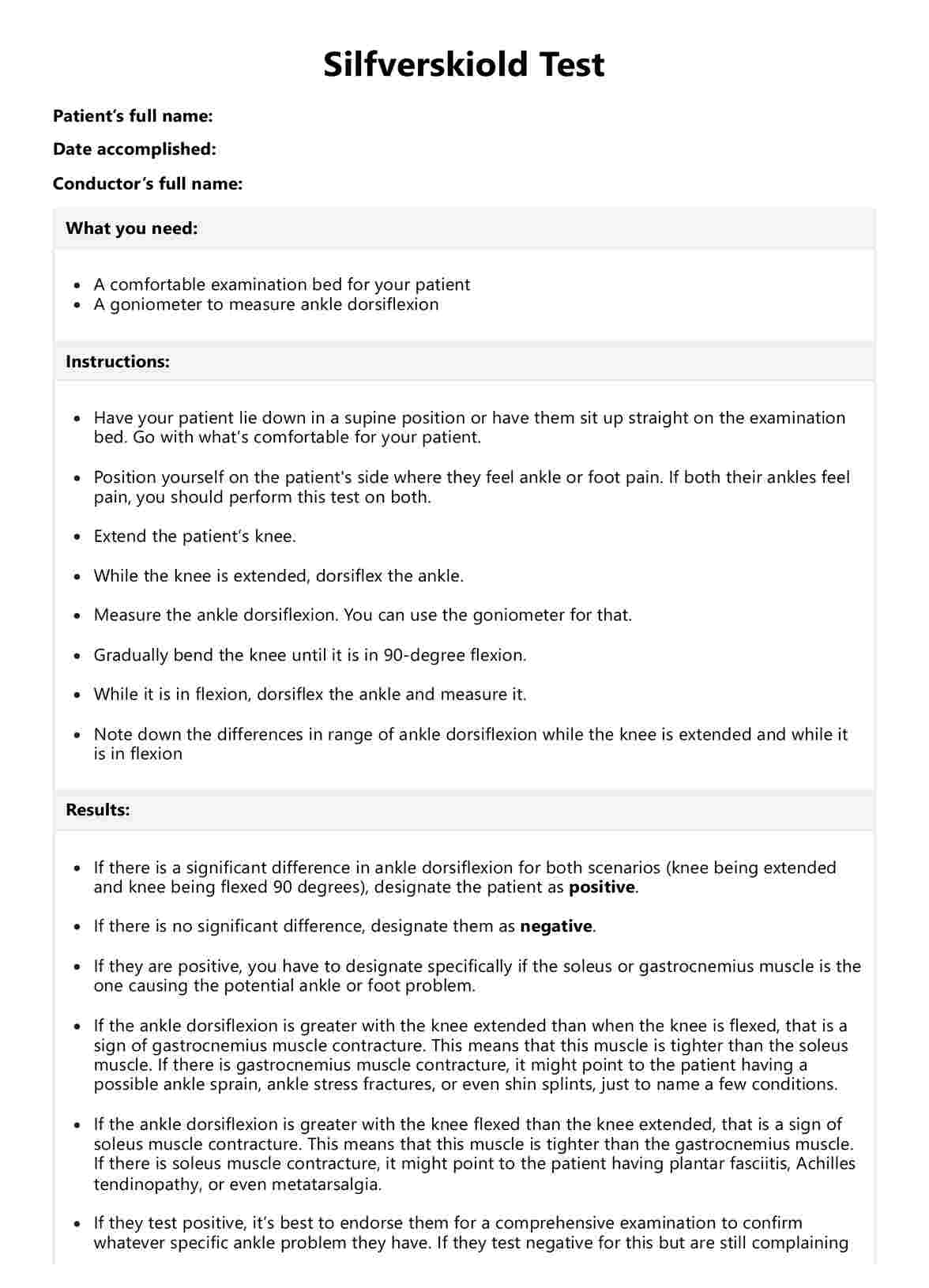It doesn’t diagnose anything but determines the factors that cause or contribute to the problems with lower extremities. Since you will be assessing the gastrocnemius muscle or the soleus muscle, the possible conditions that a patient might have will most likely be tied to either one, depending on which muscle has contraction. You can say it’s part of the diagnostic process, but it’s not the one diagnosing. Other tests will do the diagnosing.

Silfverskiold Test
If a patient you’re dealing with complains about pains in the ankle, then perform the Silfverskiold Test to asses whether the problem is tied to their gastrocnemius or Achilles tendon. Learn more about it through this guide!
Silfverskiold Test Template
Commonly asked questions
It’s not required to perform the test on both ankles. The ankle that you need to assess is the one that the patient says is in pain. Of course, if both ankles are in pain, you should perform this test on both.
The test is normally not painful because the professional performing the technique should do so gently so as not to cause any pain or discomfort. However, whatever pain or discomfort is felt will most likely stem from a pre-existing problem in the ankle. Now, if there is a pre-existing problem in the ankle, the professional must be careful when performing the technique. The last thing either party wants is to aggravate or worsen any pre-existing ankle condition.
EHR and practice management software
Get started for free
*No credit card required
Free
$0/usd
Unlimited clients
Telehealth
1GB of storage
Client portal text
Automated billing and online payments











